Zorro (Spanish for "Fox") is a fictional character created in 1919 by American pulp writer Johnston McCulley, and appearing in works set in the Pueblo of Los Angeles during the era of Spanish California (1769–1821). He is typically portrayed as a dashing masked vigilante who defends the commoners and indigenous peoples of California against corrupt and tyrannical officials and other villains. His signature all-black costume includes a cape, a hat known as sombrero cordobés, and a mask covering the upper half of his face.
| Zorro | |
|---|---|
 Cover to Dynamite Entertainment's Zorro #2 (March 2008) by Mike Mayhew | |
| First appearance | All-Story Weekly (August 1919) |
| Created by | Johnston McCulley |
| Portrayed by |
Douglas Fairbanks Robert Livingston Reed Hadley Tyrone Power George Turner Clayton Moore José Suárez Guy Williams Frank Langella George Hamilton Rodolfo de Anda Duncan Regehr Anthony Hopkins Antonio Banderas Alain Delon Christian Meier Anthimos Ananiadis |
| Information | |
| Full name | Diego de la Vega |
| Aliases | Zorro |
| Gender | Male |
| Occupation |
Nobleman Vigilante |
| Nationality | Novohispanic / Mexican |
In the stories, Zorro has a high bounty on his head, but is too skilled and cunning for the bumbling authorities to catch, and he also delights in publicly humiliating them. Zorro is an acrobat and an expert in various weapons, but the one he employs most frequently is his rapier, which he uses often to carve the initial "Z" on his defeated foes, and other objects. He is also an accomplished rider, his trusty steed being a black horse called Tornado. Zorro is the secret identity of Don Diego de la Vega (originally Don Diego Vega), a young man who is the only son of Don Alejandro de la Vega (originally Don Alejandro Vega), the richest landowner in California, while Diego's mother is dead. In most versions, Diego learned his swordsmanship while at university in Spain, and created his masked alter ego after he was unexpectedly summoned home by his father because California had fallen into the hand of an oppressing dictator. Diego is usually shown living with his father in a huge hacienda, which contains a number of secret passages and underground tunnels, leading to a secret cave that serves as headquarters for Zorro's operations and as Tornado's hiding place. In order to divert suspicion about his identity, Diego hides his fighting abilities while also pretending to be a coward and a fop.
Zorro made his debut in the 1919 novel The Curse of Capistrano, originally meant as a stand-alone story. However, the success of the 1920 film adaptation The Mark of Zorro starring Douglas Fairbanks convinced McCulley to write more Zorro stories for about four decades: the character was featured in a total of five serialized stories and 57 short stories, the last one appearing in print posthumously in 1959, the year after his death. The Curse of Capistrano eventually sold more than 50 million copies, becoming one of the most sold books of all time. While the rest of McCulley's Zorro stories didn't enjoy the same popularity, as most of them were never reprinted until the 21st century, the character also appears in over 40 films and in ten TV series, the most famous being the Disney-produced Zorro series of 1957–'59, starring Guy Williams. Other media featuring Zorro include stories by other authors, audio/radio dramas, comic books and strips, stage productions and video games.
Being one of the earliest examples of a fictional masked avenger with a double identity, Zorro inspired the creation of several similar characters in pulp magazines and other media, and is a precursor of the superheroes of American comic books, with Batman drawing particularly close parallels to the character.
Contents
Publishing history
Zorro debuted in Johnston McCulley's novel The Curse of Capistrano, serialized in five parts between August 9 and September 6, 1919 in the pulp magazine All-Story Weekly. The story was originally meant as a standalone tale, and at the denouement, Zorro's true identity is revealed to all.
Douglas Fairbanks and Mary Pickford, on their honeymoon, selected the story as the inaugural picture for their new studio, United Artists, beginning the character's cinematic tradition. The novel was adapted as the film The Mark of Zorro (1920), which Fairbanks produced, co-wrote and starred in as Diego/Zorro. The movie was a commercial success, and the 1924 reprint of McCulley's story by publisher Grosset & Dunlap used the same title, capitalizing on the movie's popularity. The novel has since been reprinted using both titles.
In response to public demand fueled by the film, McCulley wrote more than sixty more Zorro stories, beginning in 1922. The 1922 story was The Further Adventures of Zorro and was also serialized in Argos All-Story Weekly. Fairbanks picked up the movie rights for the sequel that year. However, Fairbanks's sequel, Don Q, Son of Zorro (1925), was more based on the 1919 novel Don Q's Love Story by the mother-son duo Kate Prichard and Hesketh Hesketh-Prichard than The Further Adventures. Thus McCulley received no credit on the film.
At first, production of new Zorro stories proceeded at irregular intervals: the third novel, Zorro Rides Again (not to be confused with the 1937 theatrical serial) was published in 1931, nine years after the second one. Then, between 1932 and 1941, McCulley wrote four short stories and two serialized novels. Zorro stories were published much more frequently between 1944 and 1951, a period in which McCulley published 52 short stories with the character for the West Magazine. "Zorro Rides the Trail!", which appeared in Max Brand's Western Magazine in 1954, is the last story to be published during the author's lifetime, and the second-to-last story overall. The last, "The Mask of Zorro" (not to be confused with the 1998 film), was published posthumously in Short Stories for Men in 1959. These stories ignore Zorro's public revelation of his identity.
The Curse of Capistrano eventually sold more than 50 million copies, becoming one of the most sold books of all time, while the rest of McCulley's Zorro stories didn't enjoy the same popularity, as most of them were never reprinted until the 21st century.
Over 40 Zorro titled films were made over the years, including The Mark of Zorro, the 1940 classic starring Tyrone Power. The character was also featured in ten TV series, the most famous being the Disney-produced Zorro series of 1957–'59, starring Guy Williams. Zorro appears in several stories written by other authors, comics books and strips, stage productions, video games and other media. McCulley died in 1958, just as Zorro was at the height of his popularity thanks to the Disney series.
Fictional character biography
In The Curse of Capistrano, Señor Zorro became an outlaw in the pueblo of Los Angeles in California "to avenge the helpless, to punish cruel politicians, to aid the oppressed" and is dubbed the "Curse of Capistrano". The novel features extensively both Don Diego Vega and Zorro, but the fact that they are the same person is not revealed to the reader until the end of the book. In the story, both Diego and Zorro romance Lolita Pulido, an impoverished noblewoman. While Lolita is unimpressed with Diego, who pretends to be a passionless fop, she is attracted to the dashing Zorro. The main villain is Captain Ramon, who also has his eyes on Lolita. Other characters include Sgt. Pedro Gonzales, Zorro's enemy but Diego's friend; Diego's deaf and mute servant Bernardo; his ally, Fray (Friar) Felipe; his father Don Alejandro Vega, the richest landowner in California and a widower; Don Carlos Pulido and his wife, Doña Catalina, Lolita's parents; and a group of noblemen (caballeros) who, at first, hunt Zorro but are then won over to his cause.
In later stories, McCulley introduces characters such as pirates and Native Americans, some of whom know Zorro's identity.
In McCulley's later stories, Diego's surname became de la Vega. In fact, the writer was wildly inconsistent. The first magazine serial ended with the villain dead and Diego publicly exposed as Zorro. But in the sequel, the villain was alive and the next entry had the double identity still secret.
Several Zorro productions have expanded on the character's exploits. Many of the continuations feature a younger character taking up the mantle of Zorro.
McCulley's stories are set during the during the era of Spanish California (1769–1821) and, although exact years are often vague, the presence of the Pueblo of Los Angeles means the stories cannot happen before 1781, the year it was founded. Some media adaptations of Zorro's story have placed him during the later era of Mexican California (1821–1846).
Character motifs
The character's visual motif is typically a black costume with a black flowing Spanish cape or cloak, a black flat-brimmed hat known as sombrero cordobés, and a black sackcloth mask that covers the top half of his head. Sometimes the mask is a two piece, the main item being a blindfold-type fabric with slits for the eyes, and the other item being a bandana over the head, so that it is covered even if the hat is removed: this is the mask worn in the movie The Mark of Zorro (1920) and in the television series Zorro (1957–1959). Other times, the mask is a one piece that unites both items described above: this mask was introduced in The Mark of Zorro (1940) and appears in many modern versions. Zorro's mask has also occasionally been shown as being a rounded domino mask, which he wore without also wearing a bandana. In his first appearance, Zorro's cloak is purple, his hat is generically referred to as a "wide sombrero," and his black cloth veil mask with slits for eyes covers his whole face. Other features of the costume may vary.
His favored weapon is a rapier, which he also uses to often leave his distinctive mark, a Z cut with three quick strokes, on his defeated foes and other objects. He also uses other weapons, including a bullwhip and a pistol.
The fox is never depicted as Zorro's emblem. It is used as a metaphor for the character's wiliness, such as in the lyrics "Zorro, 'the Fox', so cunning and free ..." from the Disney television show theme.
His heroic pose consists of rearing on his horse Tornado, often saluting with his hand or raising his sword high. The logo of the company Zorro Productions, Inc. uses an image of Zorro rearing on his horse, sword raised high.
Skills and resources
Zorro is an agile athlete and acrobat, using his bullwhip as a gymnastic accoutrement to swing through gaps between city roofs, and is very capable of landing from great heights and taking a fall. Although he is a master swordsman and marksman, he has more than once demonstrated his prowess in unarmed combat against multiple opponents.
His calculating and precise dexterity as a tactician has enabled him to use his two main weapons, his sword and bullwhip, as an extension of his deft hand. He never uses brute strength. Instead and more likely, he uses his fox-like and sly mind, and well-practiced technique to outmatch an opponent.
In some versions, Zorro keeps a medium-sized dagger tucked in his left boot for emergencies. He has used his cape as a blind, a trip-mat and a disarming tool. Zorro's boots are also sometimes weighted, as is his hat, which he has thrown, Frisbee-style, as an efficiently substantial warning to enemies. But more often than not, he uses psychological mockery to make his opponents too angry to be coordinated in combat.
Zorro is a skilled horseman. The name of his jet-black horse has varied through the years. In The Curse of Capistrano, it was unnamed. In Disney's Zorro television series the horse gets the name Tornado, which has been kept in many later adaptations. In most versions, Zorro keeps Tornado in a secret cave, connected to his hacienda with a system of secret passages and underground tunnels.
McCulley's concept of a band of men helping Zorro is often absent from other versions of the character. An exception is Zorro's Fighting Legion (1939), starring Reed Hadley as Diego. In Douglas Fairbanks' version, he also has a band of masked men helping him. In McCulley's stories, Zorro was aided by a deaf-mute named Bernardo. In Disney's Zorro television series, Bernardo is not deaf but pretends to be, and serves as Zorro's secret agent. He is a capable and invaluable helper for Zorro, sometimes wearing the mask to reinforce his master's charade. The Family Channel's Zorro television series replaces Bernardo with a teenager named Felipe, played by Juan Diego Botto, with a similar disability and pretense.
Characteristics
Watch movie Zorro online on Amazon
Watch movie Zorro online
Watch The Movie On PrimeMard Full HD Movie Download
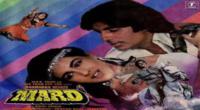
Prem Deewane Full HD Movie Download
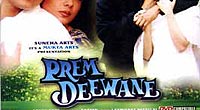
Narsimha Full HD Movie Download
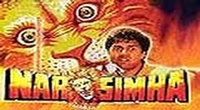
Shatranj (1969) Full HD Movie Download
.jpg)
Karz Chukana Hai Full HD Movie Download
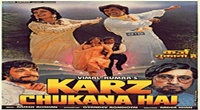
Ghar Mei Ram Gali Mein Shyam Full HD Movie Download
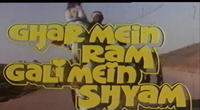
Sindoor (1987) Full HD Movie Download
.jpg)
Hotel (1981) Full HD Movie Download
.jpg)
Satyameba Jayate Full HD Movie Download
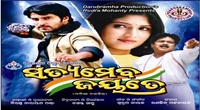
Mata Da Darbar Full HD Movie Download
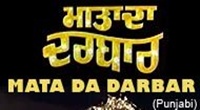
Summer School Full HD Movie Download
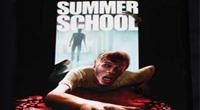
Srimathi Priyanka Full HD Movie Download
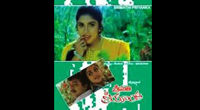
Jaathi Malli Full HD Movie Download
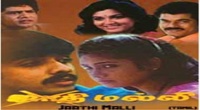
Mata Velankanni Full HD Movie Download
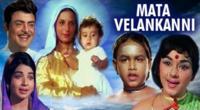
Bai Me Bholi Full HD Movie Download
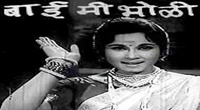
Cats and Dogs Full HD Movie Download
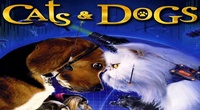
Gali Medalu Full HD Movie Download
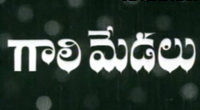
Tiger Harichandraprasad Full HD Movie Download
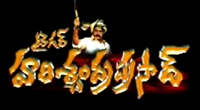
Tiger Ramadu Full HD Movie Download
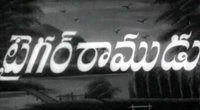
Sarangadhara Full HD Movie Download
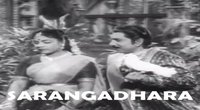
Dil Bole Hadippa! Full HD Movie Download
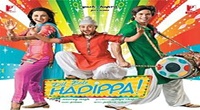
Download latest Movie from bollywood
- 1> baaghi 3
- 2> THE SKY IS PINK MOVIE FULL STORY AND REVIEW
- 3> Luka Chuppi
- 4> TO ALL THE BOYS I’VE LOVED BEFORE
- 5> Kabir Singh
- 6> Street Dancer 3D
- 7> Simmba
- 8> Gone Girl
- 9> The Girl Who Lived
- 10> Ludo
- 11> DILWALE DULHANIA LE JAYENGE
- 12> GUILTY
- 13> The Godfather
- 14> Adventures of Rusty
- 15> Sooryavanshi
- 16> Satyameva Jayate 2
- 17> Thappad
- 18> Bhool Bhulaiyaa 2
- 19> KGFChapter 2
- 20> Mardaani 2
- 21> Pinjar
- 22> Shivaji maharaj
- 23> Ek Villian 2
- 24> Hungama 2
- 25> Divergent
- 26> Mumbai Saga
- 27> The Internship
- 28> HIT (telugu)
- 29> Panga
- 30> The perfect date
- 31> 16 December
- 32> Gopala Gopala (Telugu)
- 33> Brahmastra
- 34> Gangubai Kathiawadi
- 35> Manmadhudu
- 36> Nenu local
- 37> Mahanati
- 38> Shatamanam bavathi
- 39> Lagaan
- 40> After
- 41> MOM
- 42> Shamshera
- 43> Raguvaran BTech
- 44> Khakee
- 45> The villain
- 46> OM
- 47> Mr. perfect
- 48> Bueatifull mind
- 49> Hichki
- 50> Gabbar Singh
- 51> Jogi
- 52> Before Sunrise
- 53> Before Sunset
- 54> Before Midnight
- 55> The Big Bull
- 56> Top Gun: Maverick
- 57> The Purge
- 58> The Sky is Pink
- 59> Laxmmi Bomb
- 60> Sadak 2
- 61> Sufna
- 62> Prithviraj
- 63> PK
- 64> Coolie No 1(2020)
- 65> Black Widow
- 66> Dear Zindagi
- 67> Dil Bechara
- 68> PHIR HERA PHERI
- 69> WAR
- 70> Dostana
- 71> RRR: Roudram Ranam Rudhiram
- 72> Maidan
- 73> Dabbang 3
- 74> Chhalaang
- 75> life as we know it
- 76> SherShaah
- 77> Sandeep Aur Pinky Faraar
- 78> Event Horizon
- 79> 83
- 80> Radhe: Your Most Wanted Bhai
- 81> Gunjan Saxena: The Kargil Girl
- 82> Mr India
- 83> Vivah
- 84> Anokha Bandhan
- 85> Ghost
- 86> Bhoot: Part One - The Haunted Ship
- 87> Haseen Dilruba
- 88> Laal Singh Chaddha
- 89> Qismat
- 90> Rajput
- 91> Drive
- 92> Dil Chahta Hai
- 93> Dil Ki Baazi
- 94> Dil Ka Rishta
- 95> Teesri Manzil
- 96> Dil
- 97> Love Aaj Kal
- 98> Khaali Peeli
- 99> Bunty Aur Babli 2
- 100> Atrangi Re
- 101> Gulabo Sitabo
- 102> Jodi
- 103> Suraj Pe Mangal Bhari
- 104> Deewana
- 105> Attack
- 106> Sardar Udham Singh
- 107> Toofan
- 108> THE LOVEBIRDS
- 109> Jersey
- 110> Ginny Weds Sunny
- 111> Thalaivi
- 112> Shiddat
- 113> Angels vs Zombies
- 114> Koi Mil Gya
- 115> Thank God
- 116> Bhuj: The Pride of India
- 117> Hum Aapke Hain Kaun
- 118> The Platform
- 119> Bird Box
- 120> Roohi Afzana
- 121> Torbaaz
- 122> Nikamma
- 123> World War Z
- 124> Extraction
- 125> Train to Busan
- 126> Life of Pi
- 127> SHAADI MEIN JROOR AANA
- 128> Himmat Aur Mehnat
- 129> To All The Boys: P.S. I Still Love You
- 130> Mimi
- 131> Good Newwz
- 132> Shubh Mangal Zyada Saavdhan
- 133> Raabta
- 134> Harry Potter and the Philosopher's Stone
- 135> Harry Potter and the Chamber of Secrets
- 136> Chhapaak
- 137> War of the Worlds
- 138> Harry Potter and the Prisoner of Azkaban
- 139> Harry Potter and the Goblet of Fire
- 140> MURDER MYSTERY
- 141> Shakuntala Devi
- 142> Bachchan Pandey
- 143> Jayeshbhai Jordar
- 144> Sheer Qorma
- 145> Saina
- 146> 'O' Pushpa I hate tears
- 147> Kedarnath
- 148> MS Dhoni The Untold Story
- 149> Chhichhore
- 150> Badhaai Ho
- 151> Unstoppable
- 152> Oz the Great And Powerful
- 153> The Girl on the Train
- 154> Haathi Mere Saathi 2020
- 155> The Conjuring: The Devil Made Me Do It
- 156> Gandhi Se Pehle Gandhi
- 157> The Song of Scorpions
- 158> Srimanthudu
- 159> Hello Guru Prema Kosame
- 160> Beauty and The Beast
- 161> Black Panther
- 162> Charlie and the Chocolate Factory
- 163> Bole Chudiyan
- 164> Fidaa
- 165> Duvvada Jagannadham
- 166> Bruce Lee: The Fighter
- 167> Hyper
- 168> Yaara
- 169> Red (2020)
- 170> Shivam
- 171> That Is Mahalakshmi
- 172> Nishabdham
- 173> Aashram 2020 web series
- 174> Laxmii
- 175> Mismatched
- 176> STUDENT OF THE YEAR 2
- 177> NAIL POLISH
- 178> Ramprasad Ki Tehrvi
- 179> KAAGAZ
- 180> 12 o Clock
- 181> The Power
- 182> bolo hau
- 183> Tribhanga
- 184> JAMUN
- 185> Madam Chief Minister
- 186> Maasaab
- 187> Aadhaar
- 188> Tanhaji
- 189> Bhaagi 3
- 190> Bhootnath
- 191> MALANG
- 192> Jai Mummy Di
- 193> Haathi Mere Saathi 2021
- 194> Shakeela
- 195> Unpaused
- 196> Annayya
- 197> Vamsoddharakudu
- 198> Mrugaraju
- 199> Narasimha Naidu
- 200> Sankranti
- 201> Manasu Maata Vinadhu
- 202> Anjaane
- 203> Apaharan
- 204> Bachke Rehna Re Baba
- 205> Bewafaa
- 206> Roohi
- 207> Radhe
- 208> Zindagi Khoobsoorat Hai
- 209> Yeh Mohabbat Hai
- 210> Yeh Kya Ho Raha Hai?
- 211> The Tomorrow War
- 212> DehradunDiary
- 213> Meri Shaadi Karaoo
- 214> Matruu Ki Bijlee Ka Mandola
- 215> No One Killed Jesica
- 216> Aag Ka Goola
- 217> Eight Million Dollars
- 218> Three Hundred
- 219> Cats and Dog
- 220> Decoy
- 221> Gold Rush
- 222> You Have Got Mail
- 223> Final Destination three
- 224> Tofan
- 225> Jungle
Request for Download movie Zorro
- Bollywood movies
- Latest Bollywood movies
- Download all bengali movies
- Download all bhojpuri movies
- Download all english movies
- Download all gujarati movies
- Download all hindi movies
- Download all kannada movies
- Download all malayalam movies
- Download all marathi movies
- Download all oriya movies
- Download all punjabi movies
- Download all tamil movies
- Download all telugu movies
- Bollywood action movies
- Bollywood adventure movies
- Bollywood animation movies
- Bollywood classical movies
- Bollywood comedy movies
- Bollywood crime movies
- Bollywood devotional movies
- Bollywood documentary movies
- Bollywood drama movies
- Bollywood family movies
- Bollywood fantasy movies
- Bollywood historical movies
- Bollywood history movies
- Bollywood horror movies
- Bollywood musical movies
- Bollywood mystery movies
- Bollywood mythological movies
- Bollywood patriotic movies
- Bollywood romance movies
- Bollywood romantic movies
- Bollywood sci-fi movies
- Bollywood social movies
- Bollywood spiritual movies
- Bollywood sports movies
- Bollywood suspense movies
- Bollywood thriller movies
- Bollywood war movies
- Hot actress list
- Hot gujarati actress list
- Hot tamil actress list
- Hot bhojpuri actress list
- Hot assam actress list
- Hot bihari actress list
- Hot jammu and kashmir actress list
- Hot gujarati actress list
- Hot haryana actress list
- Hot konkani actress list
- Hot marathi actress list
- Hot odia actress list
- Hot punjabi actress list
- Hot rajasthani actress list
- Hot kannada actress list
- Hot malayalam actress list
- Hot telugu actress list
- Hot tulu actress list
- Hot Actress list from Indian city
- Hot actress list from ahmedabad
- Hot actress list from alappuzha
- Hot actress list from bangalore
- Hot actress list from bangalore
- Hot actress list from bhopal
- Hot actress list from chandigarh
- Hot actress list from chennai
- Hot actress list from guwahati
- Hot actress list from hyderabad, india
- Hot actress list from indore
- Hot actress list from jaipur
- Hot actress list from kannur
- Hot actress list from kochi
- Hot actress list from kolkata
- Hot actress list from kollam
- Hot actress list from kottayam
- Hot actress list from kozhikode
- Hot actress list from lucknow
- Hot actress list from madurai
- Hot actress list from mangalore
- Hot actress list from mumbai
- Hot actress list from mysore
- Hot actress list from new delhi
- Hot actress list from patna
- Hot actress list from pune
- Hot actress list from thiruvananthapuram
- Hot actress list from thrissur
- Hot actress list from tiruchirappalli
- Hot actress list from vijayawada
- Hot actress list from visakhapatnam
- All Bollywood Movies
- Bollywood Celeb
- >Art Director
- >Audiography
- >Background Music
- >Banner
- >Choreographer
- >Cinematographer
- >Costume Designer
- >Dialogue Writer
- >Director
- >Distributor
- >Editor
- >Executive Producer
- >Hair Stylist
- >Lyricist
- >Music Director
- >Photographer
- >Playback Singers
- >Presenter
- >Producer
- >Production Company
- >Production Designer
- >Screenplay
- >Singer
- >Sound
- >Actor
- >Story Writer
- >Studio
- >Video Director
- >Miscellaneous
- >Publicity (pro)
- >Web Creator
- >Production Labs
- >Publicity Design
- >Publicity Stills
- >Writer
- >Miscellaneous Artists
- >Visual Effects
- >Reporter
- >Music Company
- >Shooting Studios
- >Picturised On
- >Line Producer
- >Co Producer
- >Asst Director
- >Casting Director
- >Cinematography
- >Choreography
- >Dialouge
- >Editing
- >Lyrics
- >Music
- >Story
- >Playback Singer Female
- >Playback Singer Male
- >Actor In A Comic Role (male/female)
- >Child Artiste
- >Ensemble Cast
- >Actor Popular Choice (male)
- >Actor Popular Choice (female)
- >Sa Re Ga Ma Pa Song Of The Year
- >Actor In Supporting Role
- >Actress In Supporting Role
- >Actor In Leading Role
- >Art Direction
- >Actress In Leading Role
- >Sound Recording
- >Costume Design
- >Special Effects
- >Action
- >Actor In A Negative Role
- >Lifetime Achievement Award
- >Cinematic Exellence (director)
- >Cinematic Exellence (male)
- >Cinematic Exellence (female)
- >International Male Icon
- >International Female Icon
- >Actor In A Supporting Role (male)
- >Actor In A Supporting Role (female)
- >Actor In A Comic Role
- >Playback Singer (male)
- >Playback Singer (female)
- >Most Promising Debut (female)
- >Most Promising Debut (male)
- >Most Promising Director
- >Sound Design
- >Lifetime Jodi
- >Marketed Film
- >Jury Award For Best Actor
- >Jury Award For Best Actress
- >Jury Award For Best Film
- >Jury Award For Best Director
- >Playback Singer(male)
- >Lifetime Acheivement Award (male)
- >Excellence Award
- >Jodi Award
- >Performer Of The Year
- >Presented By
